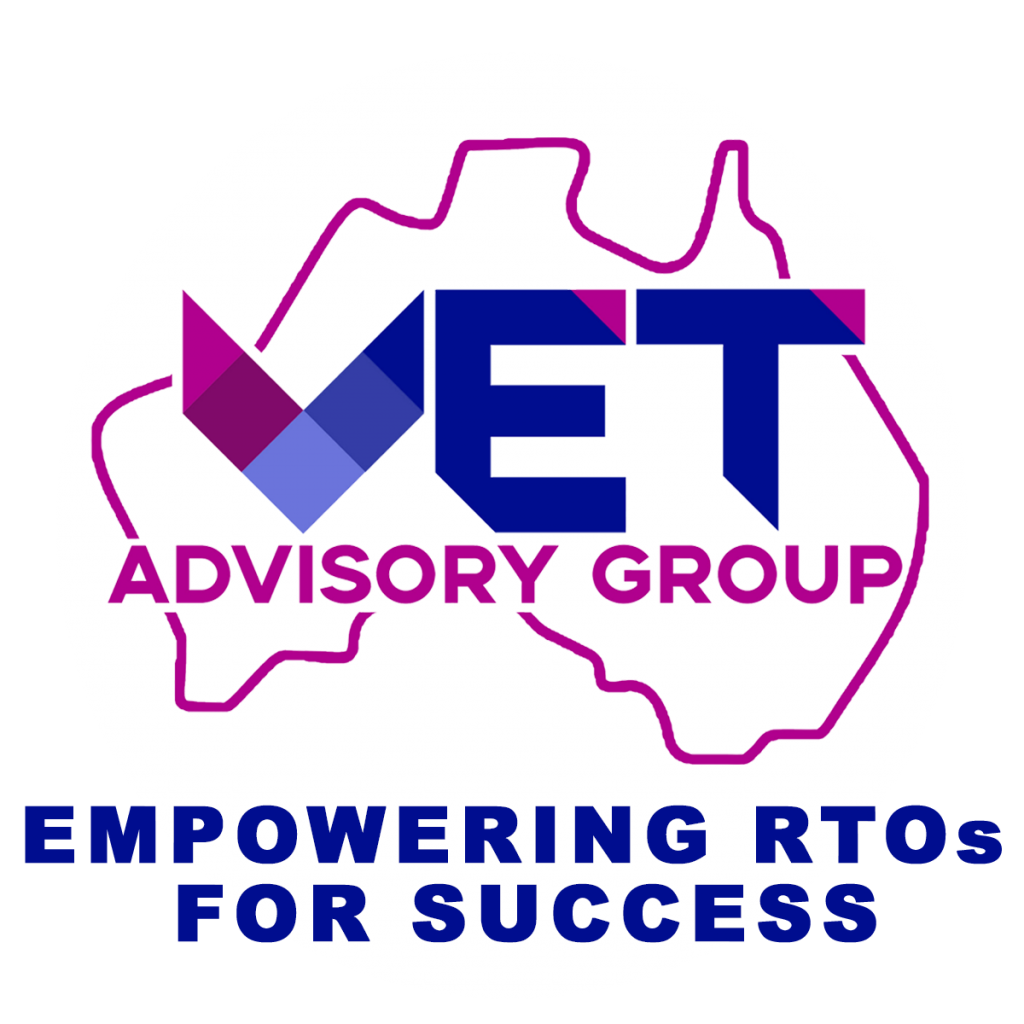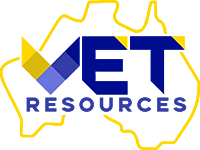

This process can help your RTO improve the assessment process, improve student performance, and meet ASQA’s requirements.
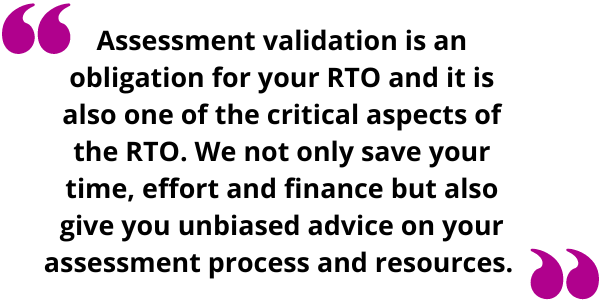
This process can help your RTO improve the assessment process, improve student performance, and meet ASQA’s requirements.
The 2 MOST important requirements ASQA standards for RTOs 2015 require from all RTOs are:
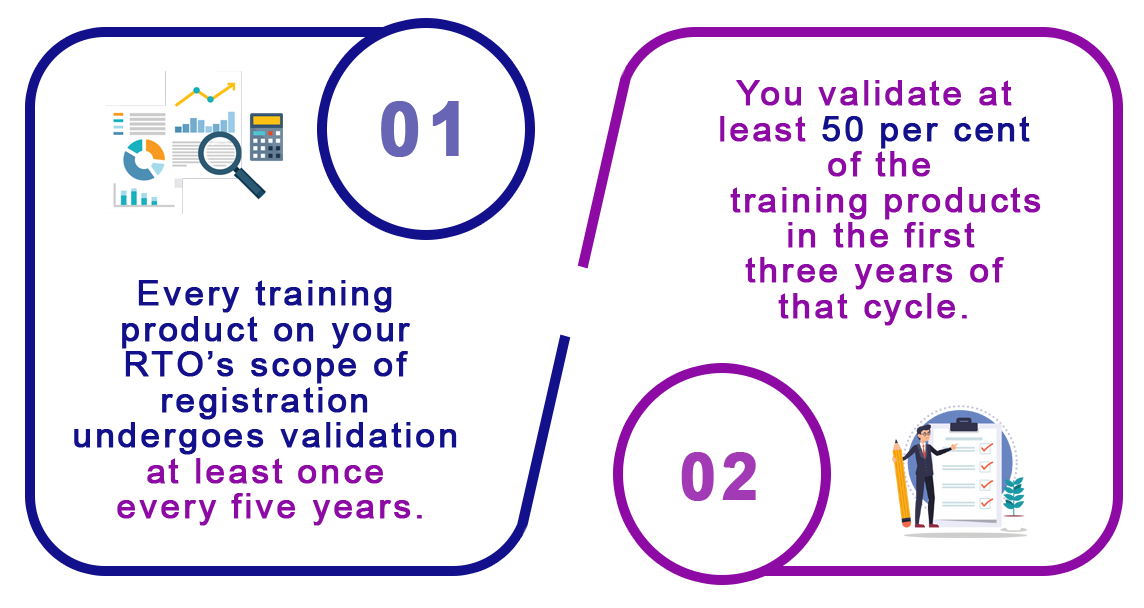
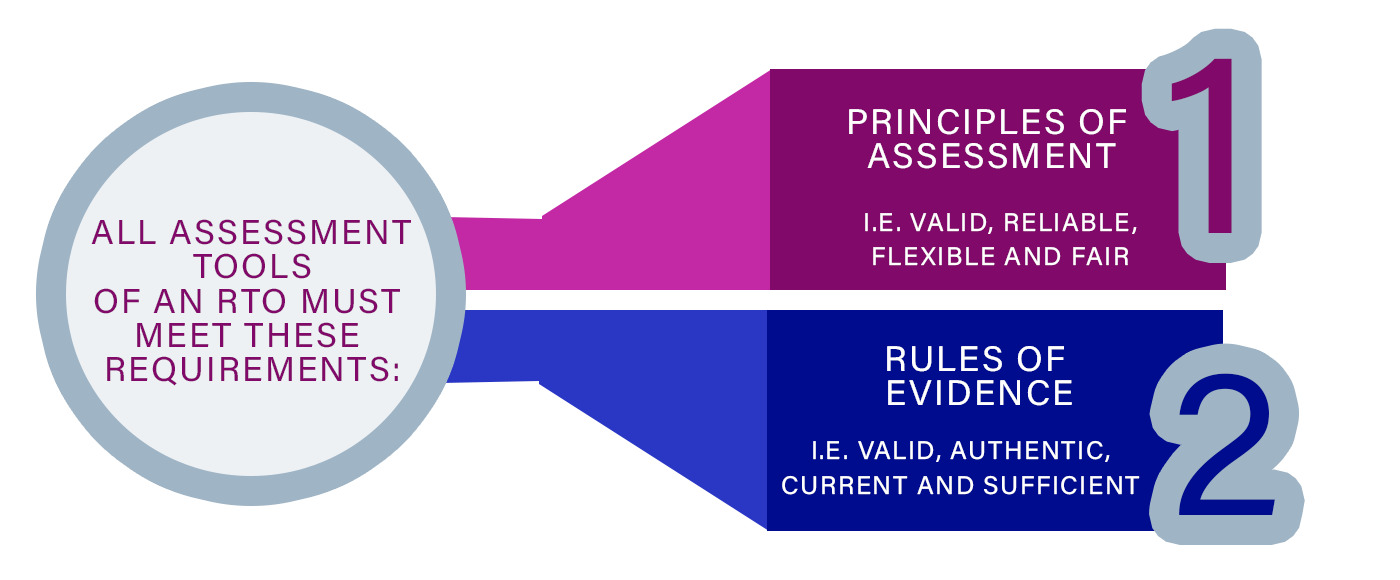
VET Advisory Group approach for validation:

VET Advisory Group provide two types of validation:
1. Assessment tool validation without student judgement
This process will mainly focus on your assessment and learner resources to assess the training package and ASQ SRTOs 2015 clause 1.8 requirments.
Validation process:
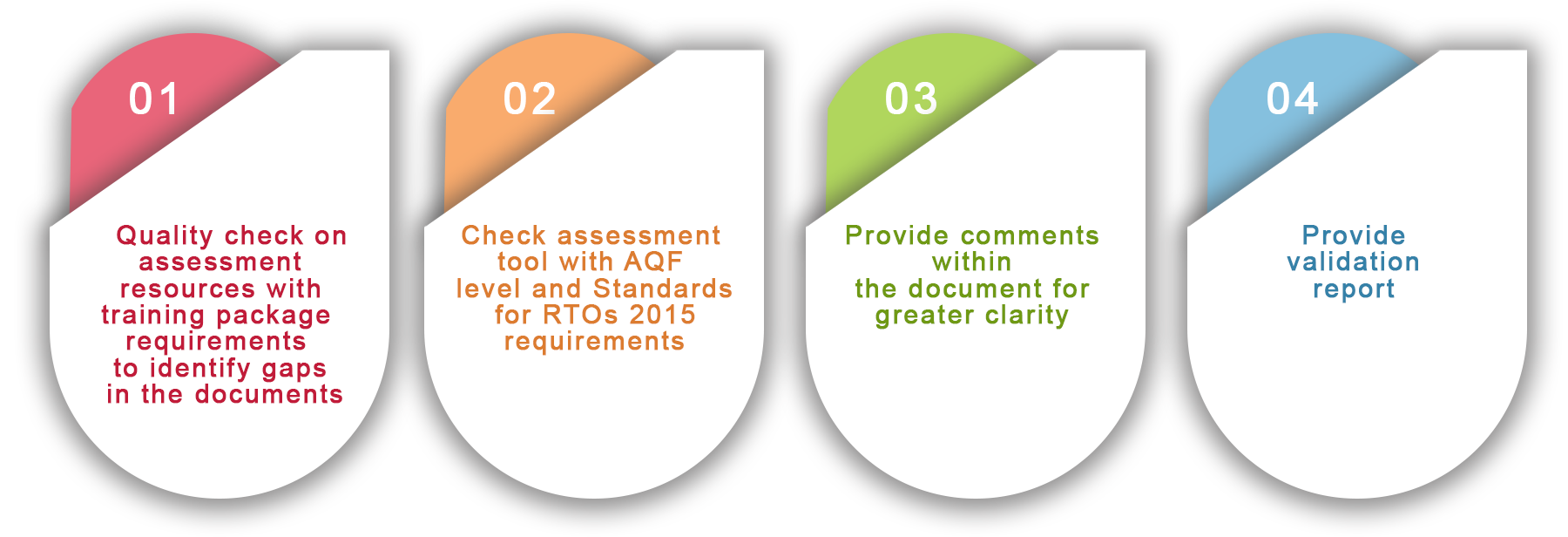
VET Advisory Group approach for validation:

VET Advisory Group provide two types of validation:
1. Assessment tool validation without student judgement
This process will mainly focus on your assessment and learner resources to assess the training package and ASQ SRTOs 2015 clause 1.8 requirments.
Validation process:

2. Assessment tool validation with student judgement
This process will mainly focus on your assessment and learner resources and sample of student completed work to assess the training package and ASQ SRTOs 2015 clause 1.8 requirements.
Our process will check the completed student samples to ensure they are sufficient, valid, current, reliable and authentic.
Note: if you have only one trainer and assessor then you can participate in the validation session, but you need one more validator involved as a lead to meet validation requirements.
Validation process:
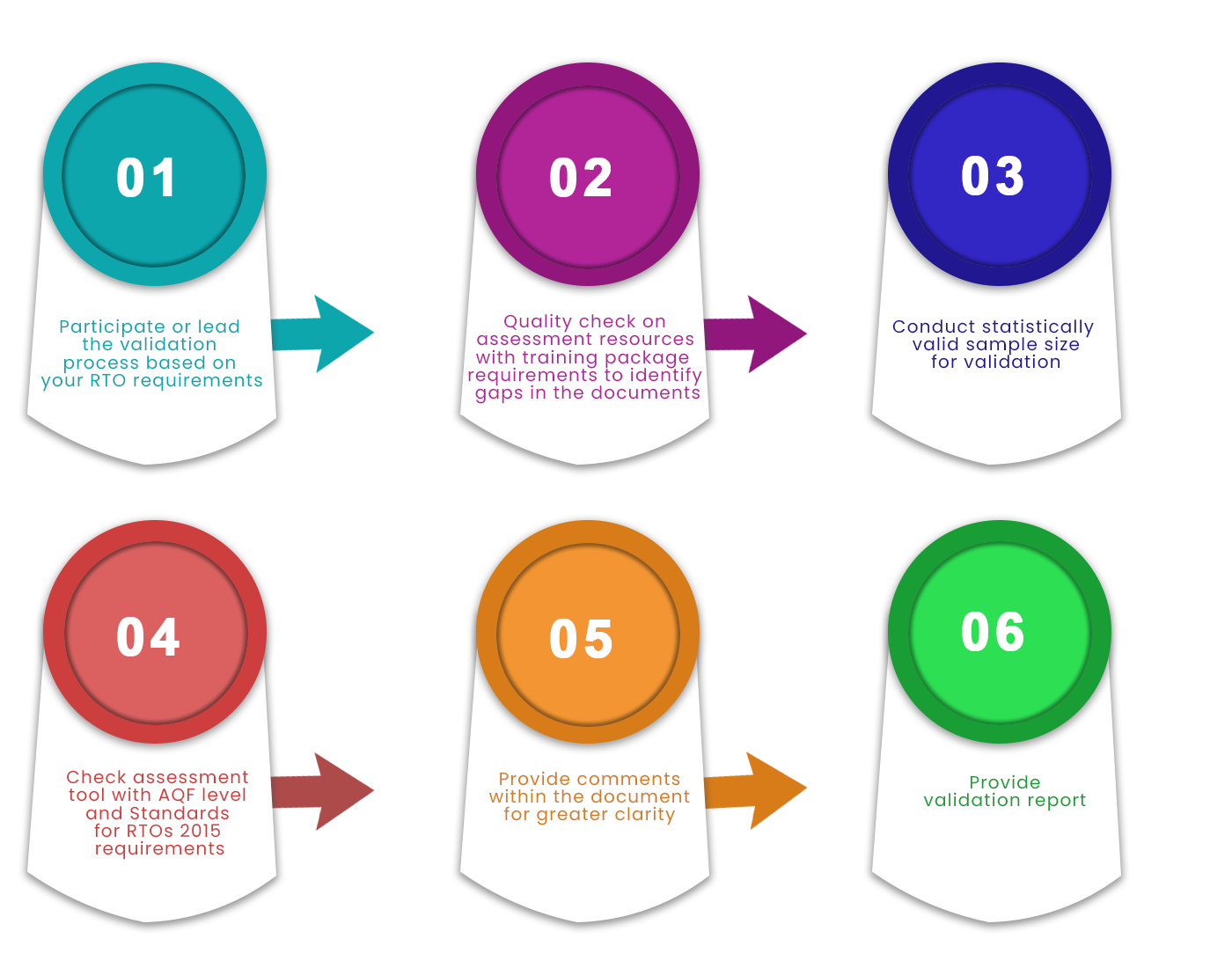
Assessment Validation FAQs
What are the assessment validation responsibilities of an RTO?
An RTO, or Registered Training Organisation, has several assessment validation responsibilities.
- They must ensure that their assessment methods and tools are valid and reliable, meaning they accurately measure the knowledge and skills of the learner.
- They must also ensure that their assessors are competent and trained to conduct assessments fairly and consistently.
- RTOs must have a system in place to monitor and evaluate their assessment practices’ effectiveness and make necessary improvements.
- They must maintain accurate records of assessment outcomes and provide feedback to learners on their performance.
These responsibilities are critical to ensuring that learners receive high-quality training and assessment that will prepare them for success in their chosen careers.
What does a validation team within an RTO need to consider?
A validation team within an RTO needs to consider various factors to ensure that the training and assessment strategies and resources align with the industry’s requirements, regulatory bodies, and learners.
The team needs to review the training and assessment materials, including the learning resources, assessment tools, and instruments, to ensure that they are relevant, current, and meet the competency standards.
They also need to evaluate the qualifications and experience of the trainers and assessors and their ability to deliver the training and assessment in a competent and effective manner.
The team needs to monitor and evaluate the effectiveness of the training and assessment strategies and identify opportunities for continuous improvement.
The validation team must ensure that the RTO complies with the standards and guidelines set by the regulatory bodies and maintains the quality of training and assessment.
How to systematically monitor assessment practice?
To systematically monitor assessment practices in an RTO, it is important to establish clear and consistent procedures for assessment. This includes having well-defined assessment criteria, ensuring assessors are properly trained and competent, and regularly reviewing and updating assessment materials.
It is also important to gather feedback from students and assessors to identify any issues or areas for improvement. Regular RTO internal audits can also help ensure that assessment practices are followed correctly and any non-compliance is identified and addressed. Additionally, external audits by regulatory bodies can provide valuable insights into the effectiveness of assessment practices and identify any areas that require improvement.
Overall, a systematic approach to monitoring assessment practices is crucial for maintaining the quality and integrity of training and assessment in an RTO.
What Does ASQA Require for Assessment Validation?
ASQA requires assessment validation to ensure that registered training organisations’ assessment tools and processes are consistent, reliable, and valid. This means that the assessment should be fair, flexible, and relevant to the training package or qualification being assessed.
ASQA requires that assessment validation includes a sample of assessments from each unit of competency or module, and that the validation process includes a range of assessors, including qualified trainers and industry experts.
ASQA also requires that the assessment validation process includes feedback and improvement strategies, and that the outcomes of the validation process are documented and reported to relevant stakeholders.
Overall, ASQA’s requirements for assessment validation aim to ensure that the assessments conducted by registered training organisations are of high quality and meet the needs of both learners and the industry.
What are the RTO Assessment Validation Requirements in the Standards for RTOs?
The Standards for RTOs (Registered Training Organisations) outline the assessment validation requirements that RTOs must comply with. These requirements include ensuring that assessment practices are valid, reliable, flexible, and fair.
RTOs must also have a documented validation plan that includes regular reviews of assessment practices, and they must provide evidence of validation activities. Additionally, RTOs must ensure that their assessors are competent and have the necessary qualifications and experience.
The assessment validation requirements are designed to ensure that RTOs maintain high-quality assessment practices that lead to valid and reliable outcomes for learners.
